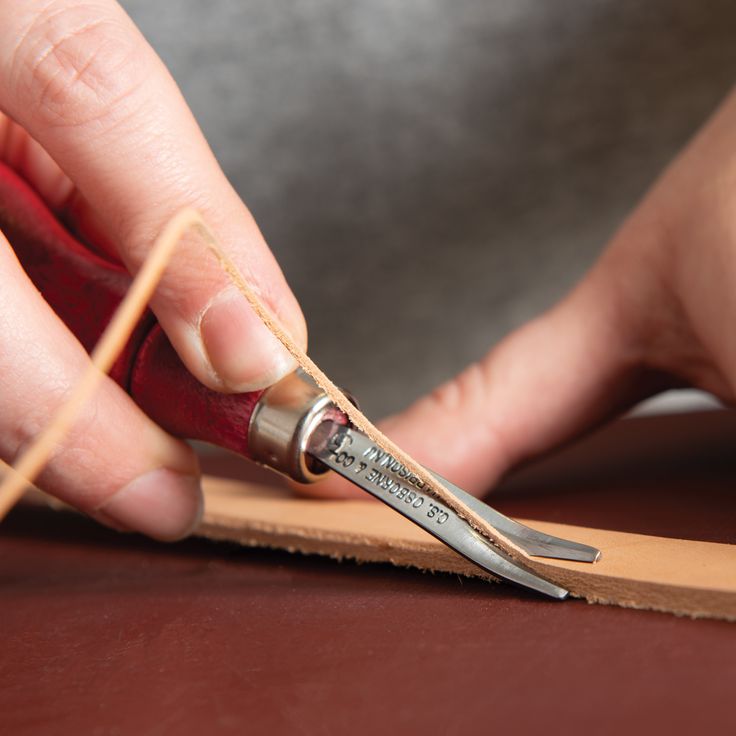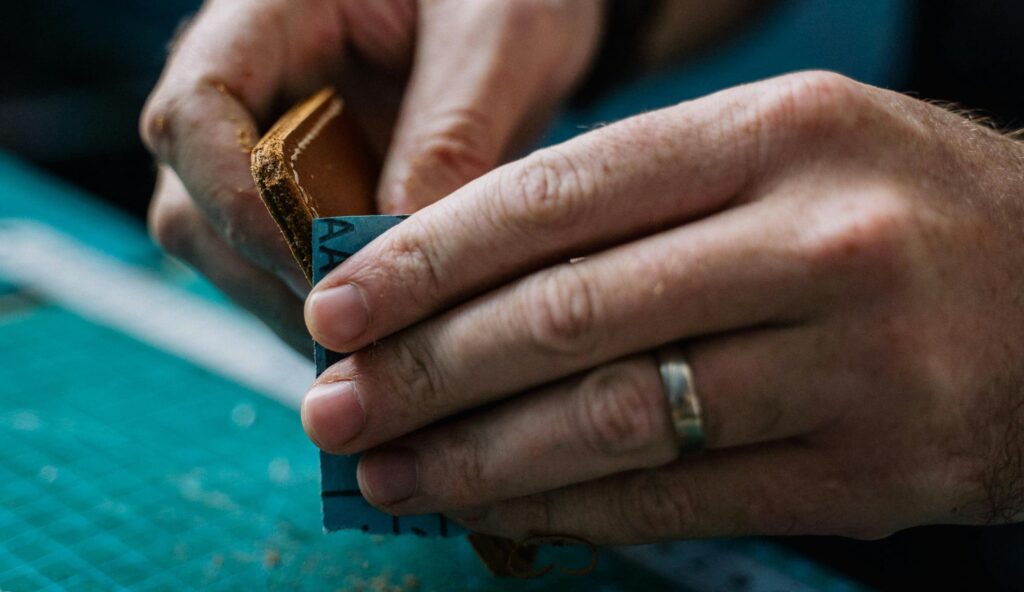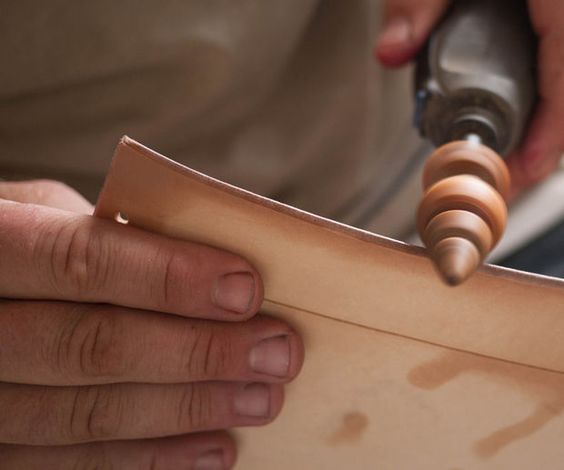Leather Edge Finishing Techniques for Professional Results
Leather is a versatile and highly customizable material, making it very interesting to craftsmen. Leather craft is a great art, and if you are a leather enthusiast, you should also know about it. It doesn’t matter if you are going to use this knowledge or not; it is always better to be informed. In this article, we will discuss some leather edge finishing techniques that are widely used in leather craft. After reading this article, you will gain a clear understanding of leather edging, which you can use to create your own leather art pieces or make more informed decisions when choosing between different leather goods that have undergone finishing.
Why Finishing Leather Edges Matters
Although it seems to be a small task, leather edge finishing is crucial for good leather crafting practices. Unfinished leather edges typically end up with 90-degree corners, which not only look bad but can also be rough and scratchy, making the item unpleasant to hold or wear. In addition, unfinished edges are more prone to fraying, cracking, and overall wear and tear, reducing the lifespan of your leatherwork.
That’s where leather edge finishing techniques come to the rescue. By using these techniques, you can add a professional look to your project. Finished edges are smooth and comfortable to the touch, making your leather creations a pleasure to hold and use. Moreover, finishing strengthens the edges, significantly extending the lifespan of your leatherwork and allowing you to enjoy it for years to come.
leather edge finishing techniques
Now we are going to discuss some very popular leather edge finishing techniques, from basic to professional level burnishing. Here’s the overview:
Beveling edges

Beveling edges is a basic edge finishing technique usually done at the beginning of the finishing process for every leather project. When leather is freshly cut, the grain layer makes the edges hard, resulting in sharp right angles, especially noticeable with thicker leather. Beveling is a technique that creates a smooth edge on the raw leather.
You can use a simple tool called a leather beveler to create these finished edges. Bevelers come in various shapes and sizes, so you can choose one that suits your project. Using a beveler is not difficult, and it allows you to easily cut sharp corners off your leather patterns. However, we advise you to practice on a spare piece of leather first before working on your actual project.
Sanding

Sanding leather edges is a technique in leather finishing that can be done before beveling but is usually done afterward. Sanding removes any imperfections and creates a smooth base for further finishing techniques like burnishing or dyeing. Additionally, if your project involves sticking leather pieces together by their edges, sanding can help you achieve a smooth and clean surface suitable for glue.
There are several ways to sand leather edges, such as using sandpaper by hand or a dremel tool with an attached sanding drum. It is very important to use the right sandpaper grit. You can start with a coarse grit (80-120), then move to medium grit (150-220), and finish with fine grit (320 or higher).
Burnishing

After sanding and smoothing the edges, it is time to add some shine and seal them for protection. To do this, we will use an edge finishing technique called burnishing. Burnishing polishes the edge to a high shine, creating a smooth, sleek, and professional look. It not only enhances the aesthetics but also strengthens the edge, making it more resistant to wear and tear.
You can get a burnishing tool kit, which typically contains items such as a burnishing tool, gum tragacanth, and a canvas cloth to buff the surface after burnishing. By mastering the art of burnishing, you can elevate your leatherwork to a whole new level. However, we advise you to first learn from a professional leatherworker before attempting it yourself, as it is a skillful process.
Edge paint

There is an alternative to burnishing that is not only easy but also fast and provides a more controlled finish. While it doesn’t achieve the same depth and character as burnishing, edge paint offers a quick way to achieve a consistent and professional-looking finish in a desired color. You can choose water-based or solvent-based paints that match the color of the leather or any color you prefer. Simply apply the paint after cleaning and sanding the edges using a thin paintbrush or a dedicated edge paint applicator.
Conclusion
In conclusion, I would like to advise using the right types of products specifically created for leather. Don’t just go to the store and ask for any random leather working tool and start working on your piece of leather. You should research properly by referring to the manufacturer’s label, and you can also check consumer reviews if you are buying online.
Different types of leather require different types of leather care products. So it is very important for you to know the leather you are dealing with. You can seek help from professionals like us to identify it.
Moreover, always test any new product on a hidden area of the leather to ensure it doesn’t cause any discoloration or damage.
I hope our article has been helpful in understanding the difference between leather cleaner and leather conditioner. If you have any doubts, leave a comment on the post, and we will definitely address them for you. You can also reach out to us for further details. For more information on leather products, you can check our other articles or contact us. LeatherBlues is known as one of the best stores for real leather products. Explore our amazing collection of leather garments and services.
For more information on leather products, you can check our other articles or you can contact us. LeatherBlues is known as one of the best stores for real leather products. Explore our amazing collection of leather garments and services.
Related topics: How is leather colored?
Leather Jacket Tear? Here’s How to Fix It Yourself
